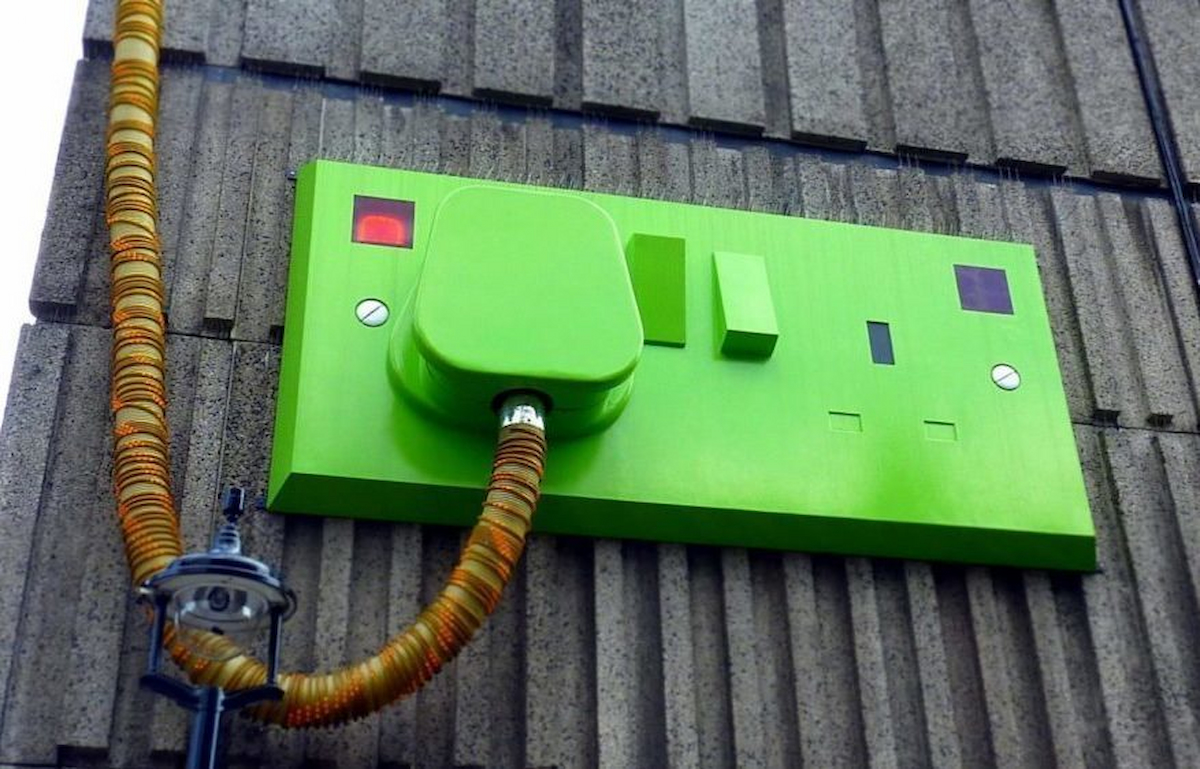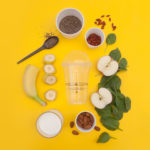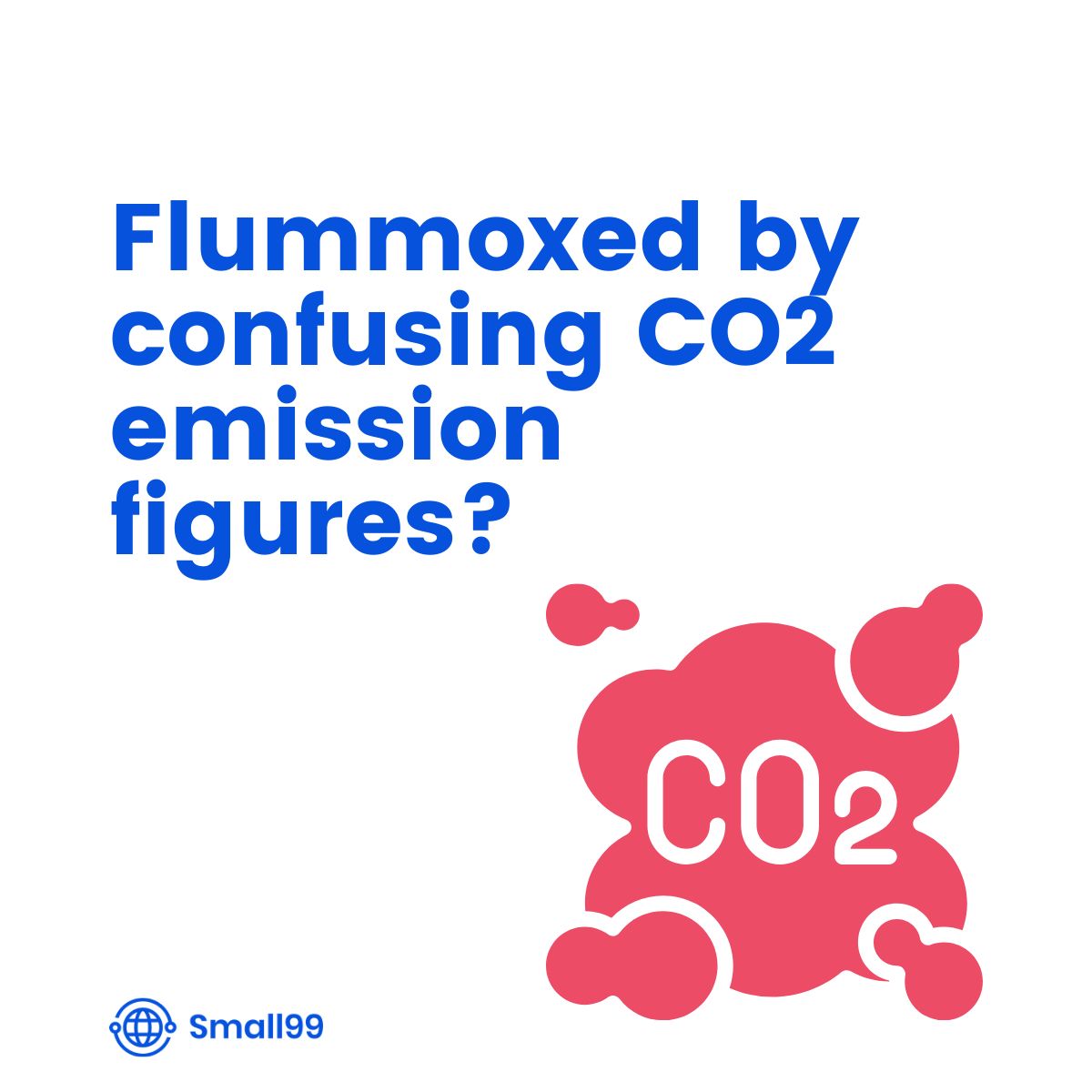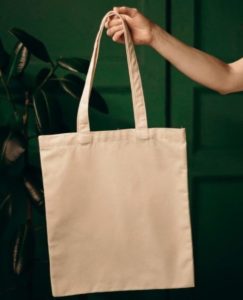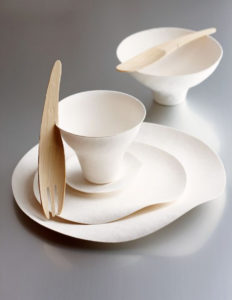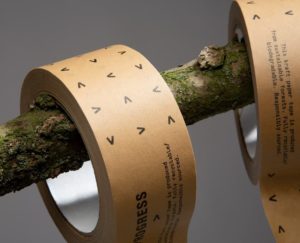Bubble wrap and styrofoam are commonly used in packaging, protecting items in transit.
However, these packing materials contain either recycled or single-use plastic.
This guide lists all of the practical eco-friendly alternatives to bubble wrap and other plastic packaging for your business.
The environmental impact of plastic packaging
Plastic is a petroleum derivative and its production implies burning fossil fuels, thus contributing to climate change.
Although polystyrene and plastic-containing bubble wrap could be recycled to some extent, plastic recycling is not currently working and still contributes to a companies carbon footprint.
Only ca. 9% of the plastic generated globally was recycled. The remaining 91%(!) plastic waste was landfilled or dumped into the environment.
Once released into the ecosystem, plastic residues (such as polystyrene or polyethylene, the most common polymer found in bubble wrap) take over 500 years to decompose.
What’s even worse is that plastic slowly breaks down into tiny fragments, the so-called microplastics, which are ingested by ocean wildlife and ultimately by us too.
So, recycling isn’t the solution it’s sometimes sold as, and instead we want to reduce the amount of plastic used entirely.
So, Which are the best green alternatives to pack fragile goods without using bubble wrap or any other plastic packaging?
The Best Bubble Wrap Alternatives
A variety of eco-friendly materials which can replace bubble wrap and other plastic-based packaging have popped up on the market over the years. Adopting alternative packaging to plastic will allow your business to achieve net zero and be part of the circular economy.
1. Compostable mailer – Substitute for Poly mailers
If you are in the fashion industry, you can pack and ship your clothes in plant-based padded envelopes, like the ones produced by Noissue.
These mailers are a mixture of a bio based polymer and plants (corn, wheat straw)-derived materials, thus being 100% compostable. Based on Noissue specifications, they are tear-resistant, write-able and you can also print on them. On top of that, these compostable bags come in three different sizes.
However, while these claim to be fully compostable, they can still leave a trace element in the soil and can have a higher carbon footprint than other recycled alternatives.
From the production standpoint, compostable mailers are better than recycled bags as they are made from a renewable feedstock (i.e. more circular). This is a significant improvement, especially when considering the low efficiency of plastic recycling.
Certainly far better than virgin plastic (i.e. new, non-recycled)-made packaging but need to be disposed of correctly to minimize their environmental impact. Recycled paper mailers seem to be the most circular approach but have the largest carbon footprint.
So, which should you choose? Ultimately your choice will come down to style (bags are easier to brand, tear resistant and may look better for your brand) and what you’re shipping.
Paper mailing bags tend to be a bit more practical-looking with limited design options, however are easier to recycle. If you’re in fashion, then the mailers may be more suitable.
Buy From: Noissue; Packhelp; All-Green; Wastebased
2. Biodegradable Packing Peanuts – A replacement for styrofoam
Peanut packaging is a viable alternative to styrofoam.
You can find eco-friendly peanuts made from a range of renewable materials, such as cornstarch-based packing peanuts, similar to those used by UK Lush.
This material is made from maize plants and, while having plastic-like properties, it’s plastic-free and dissolves in water.
Starch-based biodegradable peanuts are another available option. These are a blend of maize grit, water and herbal extracts which form a polystyrene-like plastic-free spongy texture.
This material can be simply disposed of in general waste as starchy peanuts will readily dissolve under moist conditions.
Both types of eco-friendly peanuts are much cheaper than the plastic ones.
Buy From: Air Sea Containers; Packability; Boxtopia; PrioryDirect


3. Eco Friendly Void Fill – No more polystyrene filling
Other than bio-peanuts, EcoFlo, also called Envirochip, is another sustainable alternative to polystyrene. These green chips are made from starch, which is an annually renewable resource.
Not only are they 100% biodegradable and compostable but their production process is less energy-intensive than the polystyrene-based void-fill manufacture. EcoFlo are supplied in 3 or 15 cubic feet bags and provide better protection than plastic chips.
Additionally, you could opt for wood wool void fill, which is nothing but kiln dried wood shavings. This packing material, which is bundled in 2.5kg bales, is recyclable, biodegradable and plastic-free. Also, given the woody feedstock is taken from sustainable sources, the wood wool filling is carbon neutral.
Buy From: Kite Packaging; Raja; PrioryDirect


4. GreenWrap – Best Bubble Wrap Alternative
This eco-friendly wrap is made of Sustainable Forestry Initiative (SFI)-certified paper. SFI is an independent, non-profit organization which ensures forests are sustainably managed.
If a product is certified by SFI, it complies with a set of standards, including biodiversity, wildlife habitat and water quality protection, sustainable harvest levels, and forest regeneration.
According to the honey seller Savannah Bee, which replaced foam with Geami’s GreenWrap, this packaging solution is not only more environmentally sound but also more efficient. This is because this green material takes up less space and speeds up the packing process.
As claimed by another US supplier, GreenWrap protects goods as efficiently as bubble wrap but is biodegradable, compostable, and fully recyclable.
To reduce your shipping carbon footprint, you can order the Geami WrapPak Eco Friendly Packaging System from the UK.
Buy From: Packaging2Buy; RAJA; Antalis; Acopia


5. Mushroom Packaging – An organic alternative to polystyrene
Yes, you read that right.
Mushrooms are incredibly versatile and can be used for a host of applications, including as a packaging substitute for plastic wrap.
Ecovative was the precursor in manufacturing mushrooms packaging, a.k.a. MycoComposite, in 2007 in the US.
Its product, born as an alternative to polystyrene, consists of a mixture of mushrooms roots (mycelium) and hemp residues. However, you can purchase a similar material from a UK supplier.
This organic packaging will decompose in a garden in a couple of weeks after use. Given the short lifespan, mushroom packaging is ideal for local shipping of food or other goods.
While the future seems to belong to fungal packaging, IKEA has already picked up on the mushrooms’ potential to reduce its plastic packaging waste.
Buy From: Magical Mushroom; Ecovative


6. Seaweed – Alternative to Plastic Film
If you want to ship the extra mile and make packaging disappear, algae is the material you’re looking for.
Just like mushrooms, seaweed is another organic resource which fits many purposes, one being food and drinks packaging in alternative to plastic.
By combining algae and other plants, Notpla designed a thin film which is both biodegradable and edible.
In 2019, the seaweed packaging manufacturer avoided wasting 200,000 single-use plastic bottles during the London Marathon by providing edible seaweed pouches filled with a sports drink.
This can be a revolution in the entertainment industry as it can minimize the waste generated in big events such as concerts, conferences, etc.
So, there we have it! If you’re an online business regularly sending parcels, there are a wide range of alternatives to plastic packaging that will make a big dent to your carbon footprint.
Thanks to it improving your daily operations, you’re one step closer to being the circular economy!




